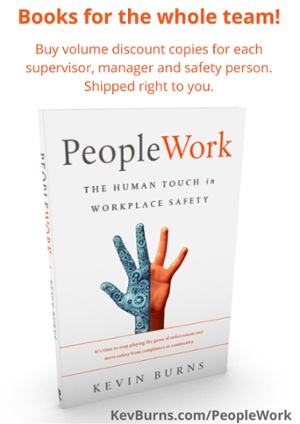How to Sell Safety Effectively
Build excitement, motivation and get your people on-board with safety.
One of the questions I’m asked most often is “How do we motivate employees to be enthusiastic about safety?”
First, let me say that employees rarely get excited or motivated about anything that does not clearly identify what is in it for them. Nor do they get behind anything that they had pushed down onto them. Push down from upper management any program that seems punitive, rules-based or force-fed, and you are not going to get their motivation. Think about how you react when forced to do something that was decided for you.
If you want your people to buy-in to safety, you’re going to have to approach your safety program with the intent of selling your people on helping you to create a culture of safety. You are going to need to consult and converse with your people in a way that makes them feel part of the team and part of the decisions that are being made. And, most of all, before you do any of that, you are going to have to make some decisions in three different areas about what kind of safety program you are building.
So, let’s talk about those three key parts that will help with selling your safety program effectively:
1Brand. Decide what your particular brand of safety is. Is it to just meet the bare minimum? To let your people bring all of their bad habits learned at former workplaces? Or is your brand of safety one that encourages participation and ownership? Where your people all have a stake in looking out for each other. Is yours a budget brand of safety or a premium product? One that exceeds minimums and helps yours to become a world-class organization. If you want to encourage better participation and motivation for the safety program, you have to decide what brand of safety you’re selling. And then make sure that everything you do lines up to support that brand.
2Benefits. Reduce time spent on rules and more on the benefits of safety. What are the benefits of safety? Well, safety training prepares you to deal with uncertainty. It trains you to react well. It builds your personal confidence to make good choices because you know exactly what to do. Safe people are more dependable. And, dependable people get more opportunities. Put another way, people who don't follow safety don't get put in charge. Good safety performers get noticed and get the ear of management. They have better influence. Just a few examples of what the benefits of safety might look like. (Saying things like “you don’t get hurt” is NOT a benefit – a benefit is a positive, not avoiding a negative.)
3Wins. Find ways to get your people more wins. So, what makes it a win? And don’t say “going home safe” because going home safe is not a win. Going home safe is what they’re supposed to do. That’s the law. Meeting the bare minimum is not a win – it’s the least you’re allowed to do by law. Besides, most of your people are already going home safe now. They don't have to do anything different to get the same result. But to get a win, you want them to do something different. Safety wins are about improving results. Nothing motivates people to get pumped-up like the chance to get another win.
 The more wins employees get, the more they will be motivated to accomplish more. Companies that focus on helping their people improve attract employees who want to get better. Better workplaces attract better employees.
The more wins employees get, the more they will be motivated to accomplish more. Companies that focus on helping their people improve attract employees who want to get better. Better workplaces attract better employees.
If you’re going to make yourself more effective at selling your safety program, and you want to build excitement and motivation in getting your people on-board with the safety program, you need to consider all three parts: Brand, Benefits and Wins.
--
Energize safety culture. Get employee buy-in. Build teamwork.
Put Kevin Burns' expertise to work in your organization.
Kevin Burns is the creator of the M4 Method™ and the 90-Day Safety Accelerator program. He is the author of PeopleWork: The Human Touch in Workplace Safety.
Get details and more information http://www.kevburns.com/contact


